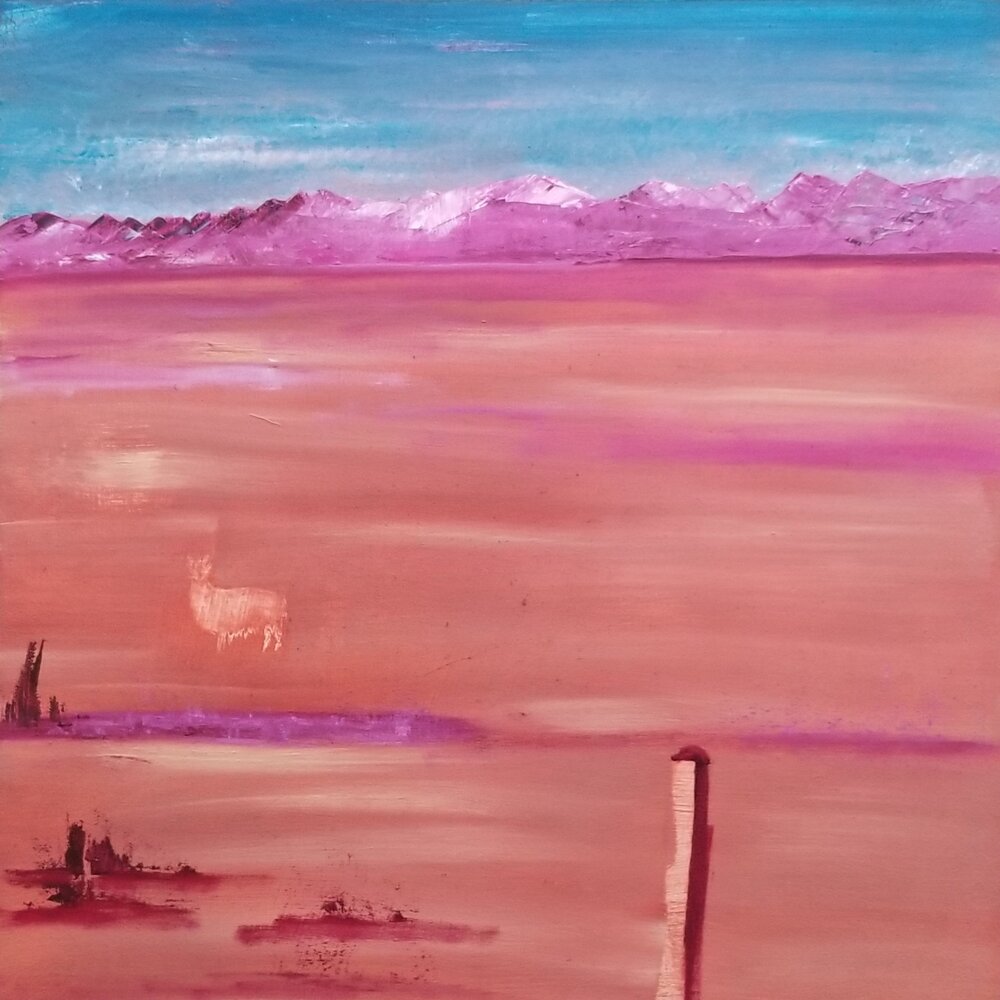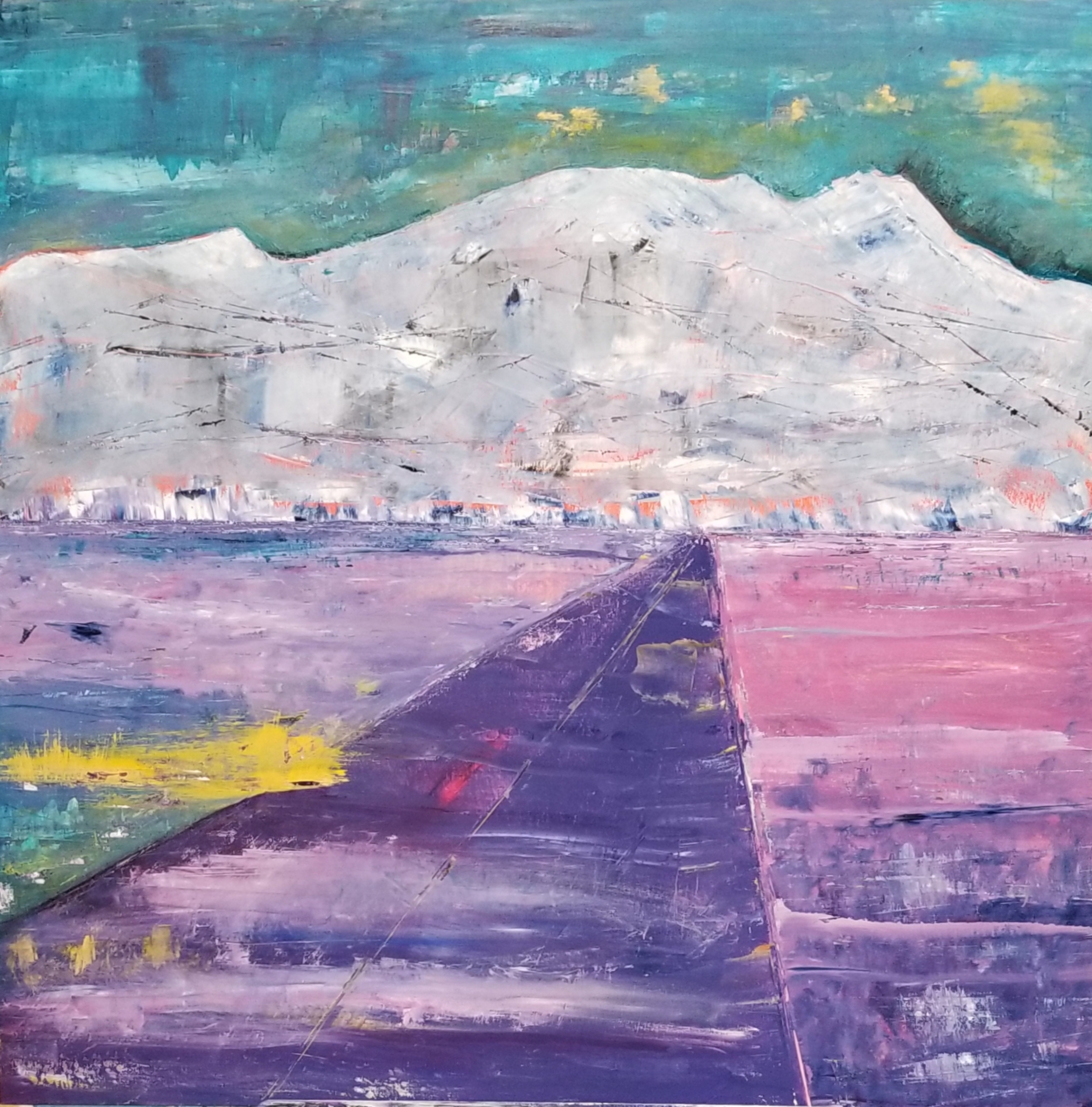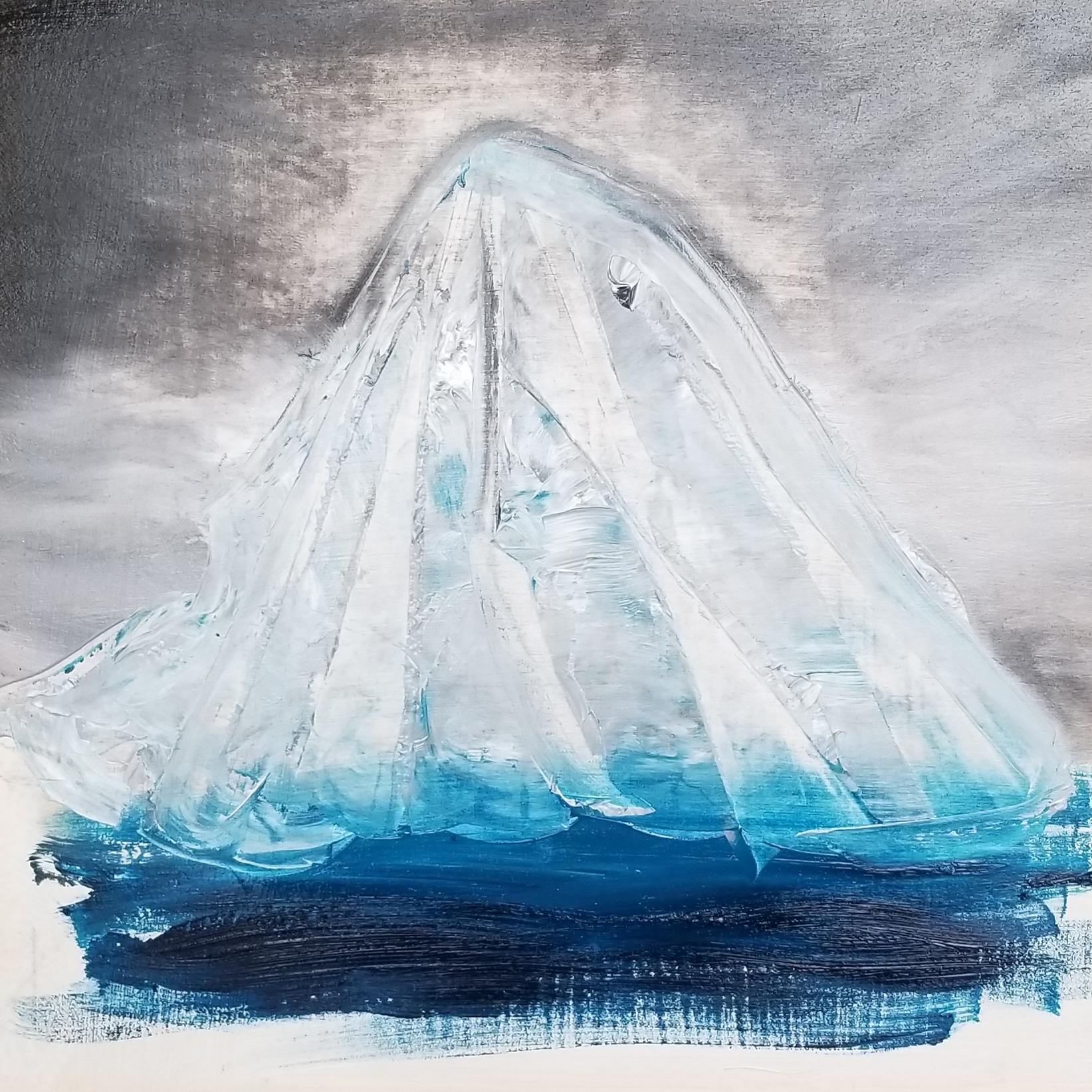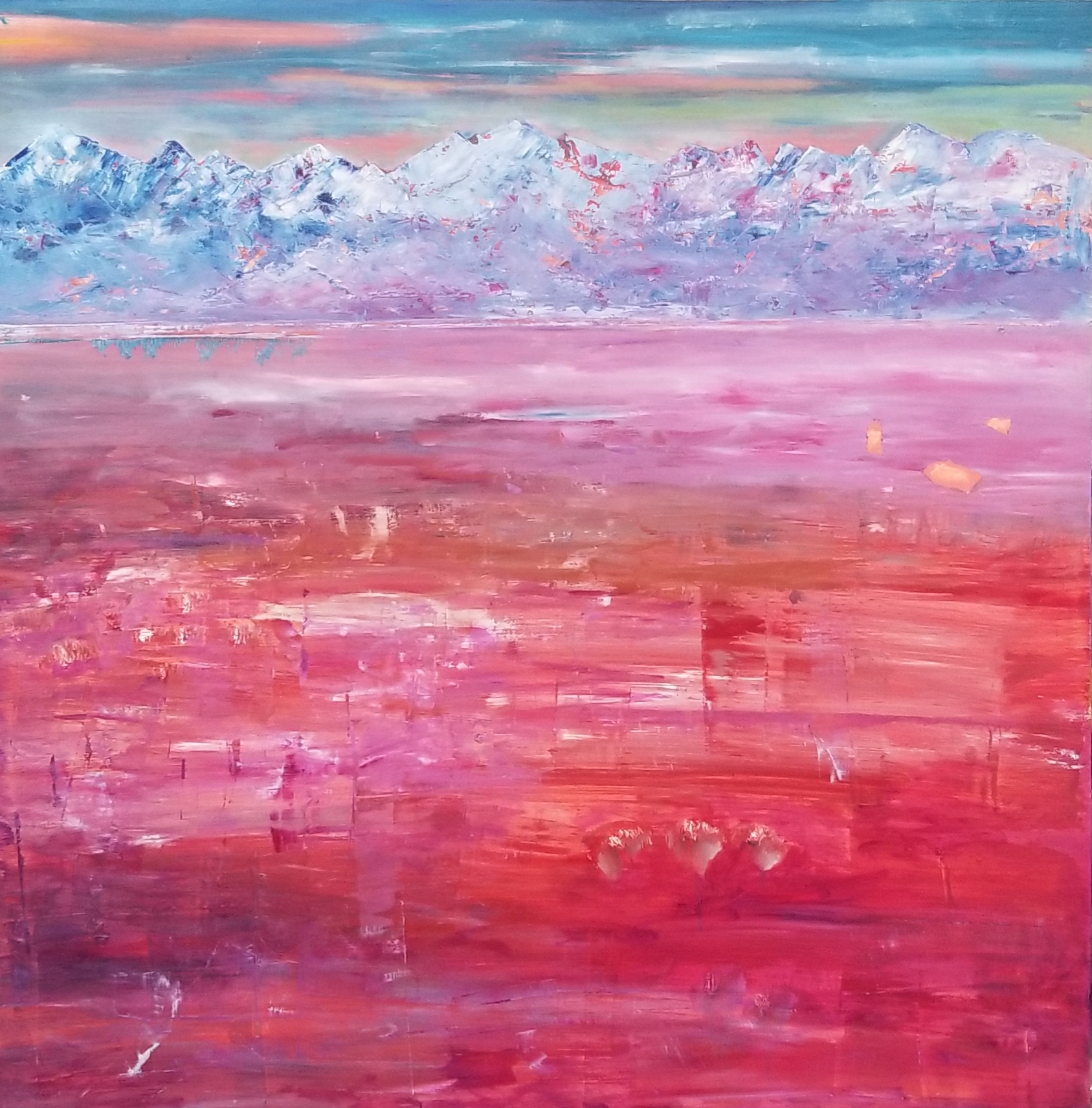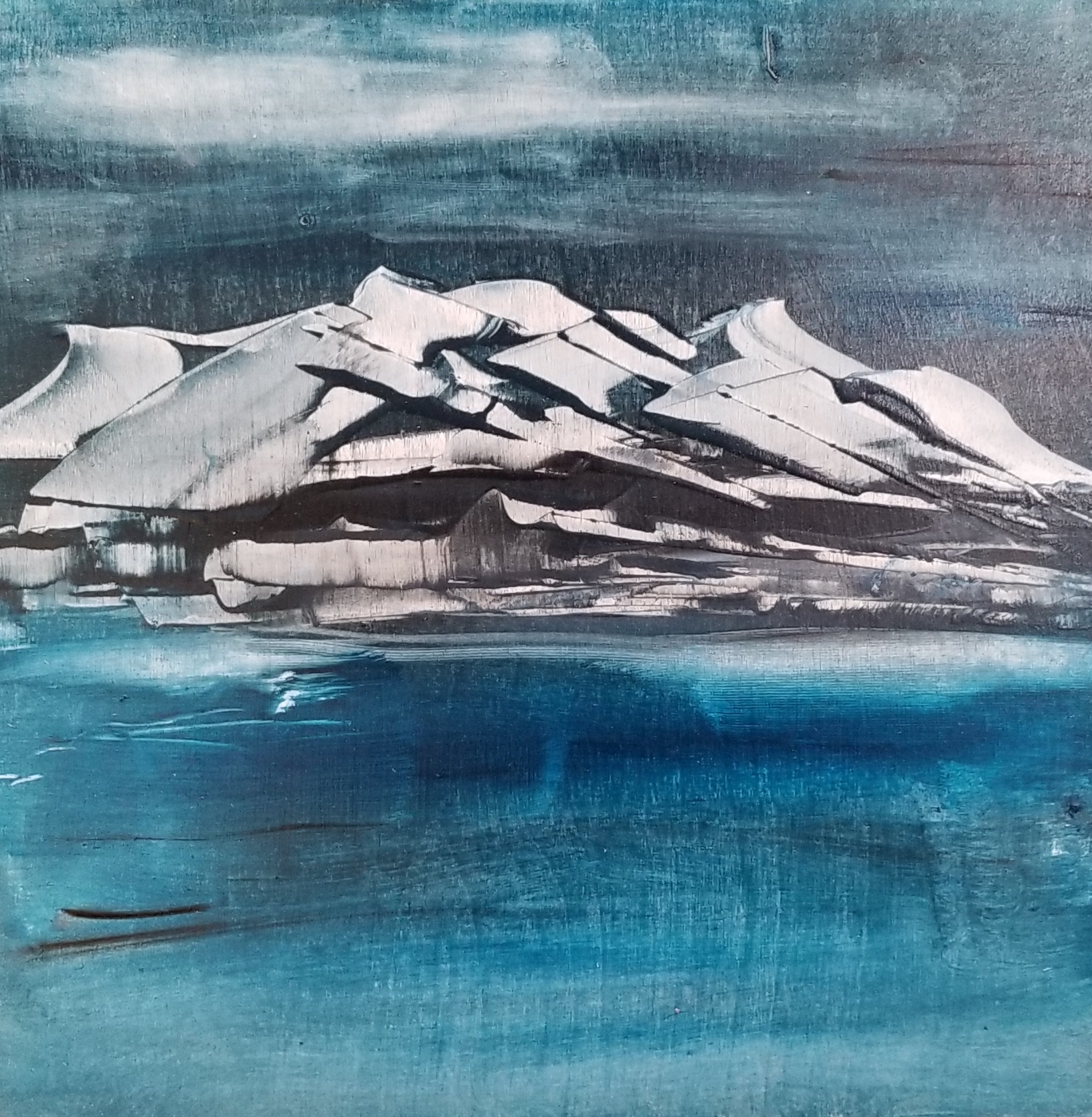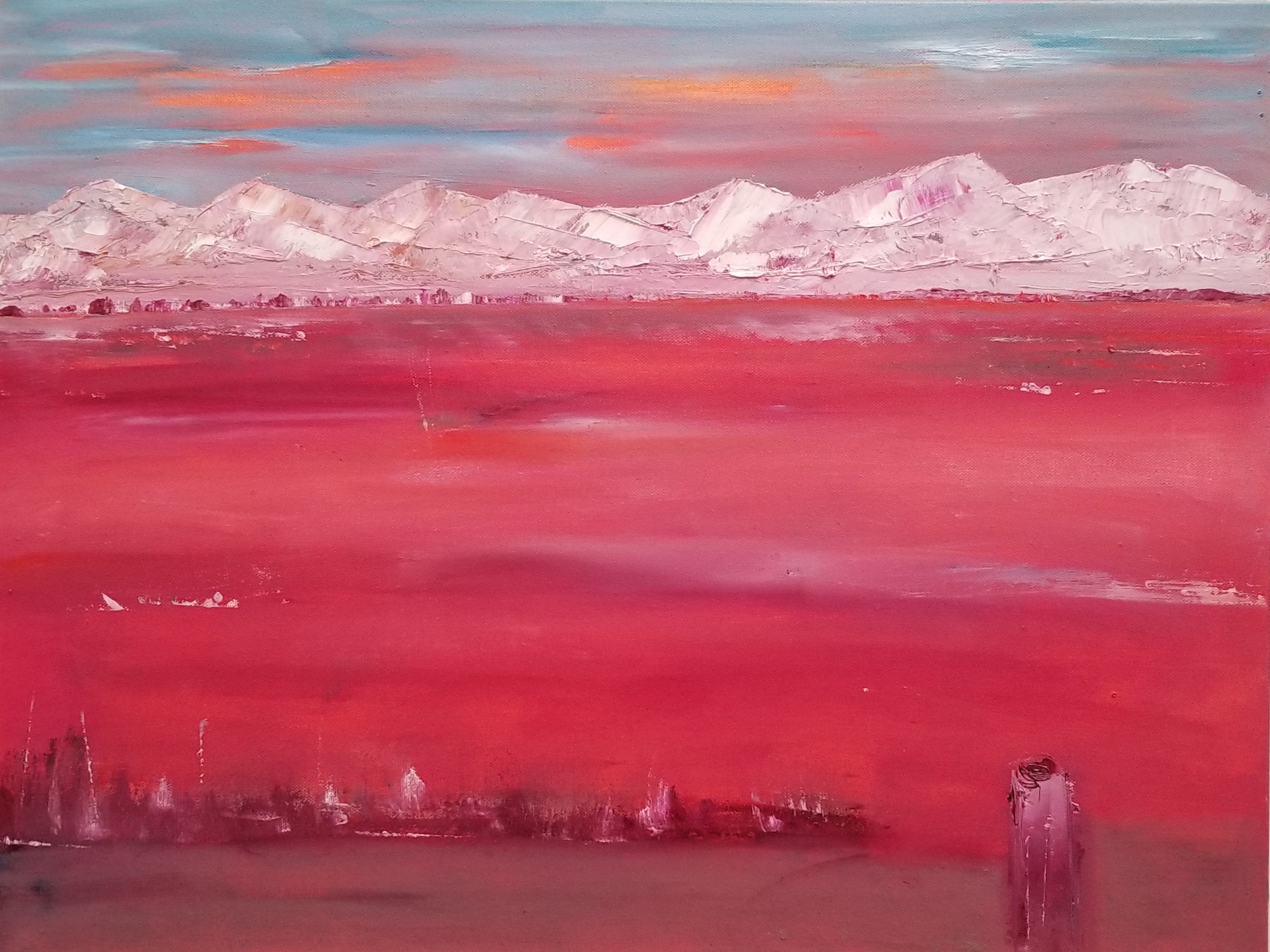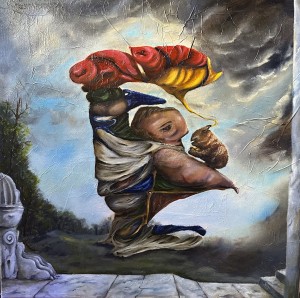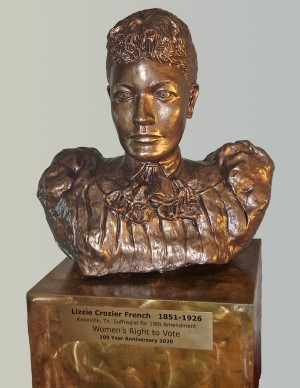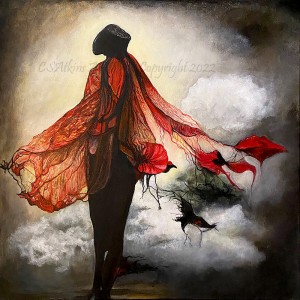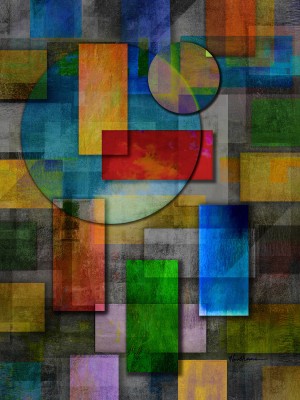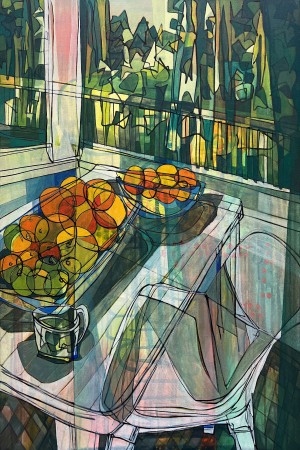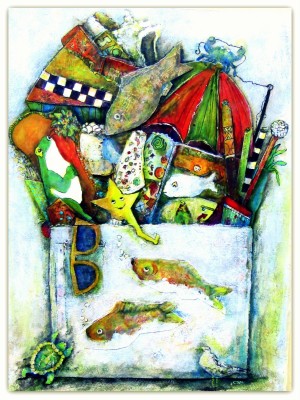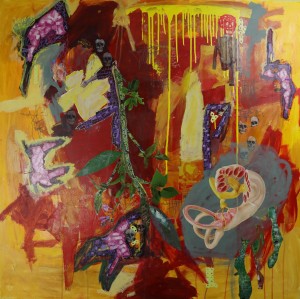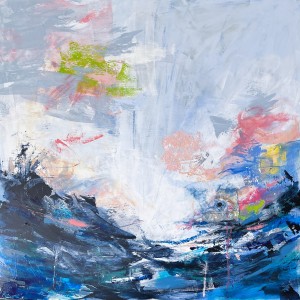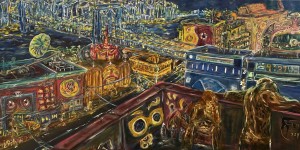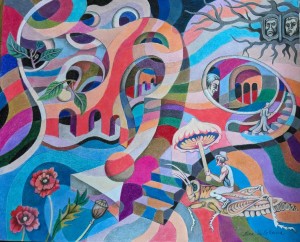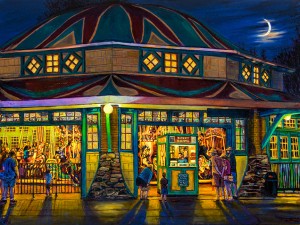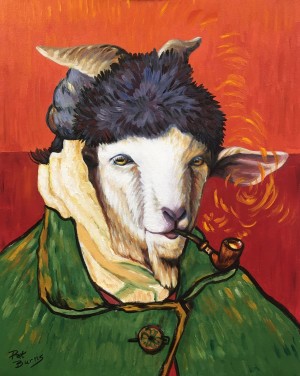Kim Roberts
Denver, Colorado, USA
Kim Roberts, MA, grew up in DC, and completed her undergraduate studies in Paris. While earning a Master’s degree in Psychology from Naropa University Kim developed an obsession with Ashtanga yoga and Buddhist meditation. She spent the better part of 15 years living in South and Southeast Asia leading retreats offering contemplative practice, psychology and creative process as tools for personal growth. She maintains a small private practice of online counseling clients and educational programs. She is the author of two books: Ashtanga Yoga for Beginner’s Mind and Toward a Secret Sky: Creating Your Own Modern Pilgrimage. Kim's work is represented by galleries in Denver and Breckenridge. Kim divides her time between Crestone and Denver, Colorado.
How and when did you start creating art?
I started painting while I was living in Paris. I had come across an exhibit --by an Algerian artist named Berkouk--at a small gallery on the Place de Vosges, and I had such a strong emotional response to the work, I literally cried in the gallery. On the walk home to my flat near the Bastille, I stopped to get some paints and paper, and used that inspiration to create my own work that might be as emotionally charged. I copied that artist who had inspired me, but also I started painting scenes from the books I was reading--Russian or French literature. It was the first time I’d ever created what I would consider a body of work. Ever since then, I’ve painted in some form during my travels, but it wasn’t until 2015 that I actually made art my primary focus.
What media and genres do you work in?
I make colorful encaustic wax monotypes evoking bold feelings and moods. I also make abstract Colorado landscapes in oil. When I travel I love to draw and make ink + watercolor sketches of wherever I happen to be.
Who or what are your influences?
The inspiration for my work is often found in Colorado mountain landscapes--especially the Sangre de Cristo mountains near Crestone, Colorado. I try to capture a sense of the immense space there, and evoke that same sense of space in the mind of the viewer. As a psychotherapist, I’m interested in how various moods and emotions can be conveyed through color, form and texture.
What was your inspiration for The Lonely Llama?
On the long and desolate road to Crestone you will pass the lonely llama. He lives in the middle of the vast valley --rain and shine, freezing and sweltering --for years on end. I often stop on the side of the road to take pictures of the gorgeous view. So I sometimes stop to see the llama. His resilience is an inspiration and I think of him whenever I feel lost and alone. The lonely llama holds space for us all by being an example of how to weather any storm. Resilience is the most important tool you can have in your kit--especially in times like these. As a psychotherapist and meditation teacher, I see people crumble for lack of it. So often the key to remaining steady in the face of change is to simply learn to stay still and tolerate the circumstances--like ducking under the surface momentarily to let a wave crash over you. But if you panic you get caught in the turbulence.
The vastness of the valley, encircled by massive mountains on all sides creates a container--or a crucible to learn this process. If you try to freeze the space, life gets brittle and hard. If you can allow the space to infiltrate your mind, then whatever might be troubling you starts to take on a new perspective--the space is always larger. The mountains stand guard like wise sentinels while the space returns all events to emptiness. So whatever trouble your mind can dish out, the space always eats it. The answer always lies in befriending the elements and allowing them to express their sanity.
Describe your creative process?
I’m obsessed with creating a sense of space, and depth. It's like I get a mood and have to express it in paint. I often start with a background of something bright which sets an edgy tone. Then depending on what I want the focus to be, I create mountains in the distance, or simply another natural element that provides a reference point. I start my foundation with this landscape in mind, and then it usually devolves into a bright, abstract field of inappropriate colors.I paint, then observe, then respond to what I observe, often letting “mistakes” reveal elements of the work that are asking to be revealed. It’s like the paint and I co-create the work. I like to work with non-traditional tools--hands, squeegie, kitchen utensils, palette knife--rather than brushes.
Eventually, the piece makes it clear what it wants to be, at which point I step out of the way and let my intuition finish the final touches.
What are you working on currently?
I just signed on with a gallery in Breckenridge that specializes in Colorado inspired landscapes that you can “fit in a suitcase” to take home. So I’m developing a series of small paintings around this theme. Luckily I can work on this on my patio while I’m quarantined in Denver!
What are your near/long term goals as an artist?
At the moment, my goal is to simply continue making art to stay afloat financially and hope that my galleries stay open during this pandemic crisis. While the world restructures on so many levels, I am focusing on building my online presence and website shop. I’d like to develop a unique and recognizable style that invites people to experience the beauty of the Colorado landscape in an unexpected and eye-opening way. I'd like my art to wake people up and invite them into a moment of meditative awareness.
My long term goal is to sell/share my art around the world as a way of spreading healing and joy.
Where can people view/purchase your work (gallery, website, etc)?

